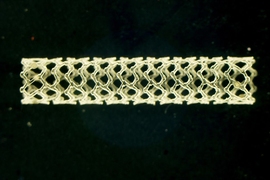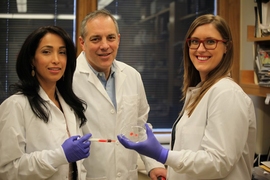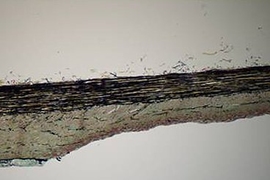Every year, around 50,000 people in the United States experience cardiogenic shock — a life-threatening condition, usually caused by a severe heart attack, in which the heart can’t pump enough blood for the body’s needs.
Many of these patients end up receiving help from a mechanical pump that can temporarily help the heart pump blood until it recovers enough to function on its own. However, in nearly half of these patients, the extra help leads to an imbalance between the left and right ventricles, which can pose danger to the patient.
In a new study, MIT researchers have discovered why that imbalance occurs, and identified factors that make it more likely. They also developed a test that doctors could use to determine whether this dysfunction will occur in a particular patient, which could give doctors more confidence when deciding whether to use these pumps, known as ventricular assist devices (VADs).
“As we improve the mechanistic understanding of how these technologies interact with the native physiology, we can improve device utility. And if we have more algorithms and metrics-based guidance, that will ease use for clinicians. This will both improve outcomes across these patients and increase use of these devices more broadly,” says Kimberly Lamberti, an MIT graduate student and the lead author of the study.
Elazer Edelman, the Edward J. Poitras Professor in Medical Engineering and Science and the director of MIT’s Institute for Medical Engineering and Science (IMES), is the senior author of the paper, which appears today in Science Translational Medicine. Steven Keller, an assistant professor of medicine at Johns Hopkins School of Medicine, is also an author of the paper.
Edelman notes that “the beauty of this study is that it uses pathophysiologic insight and advanced computational analyses to provide clinicians with straightforward guidelines as to how to deal with the exploding use of these valuable mechanical devices. We use these devices increasingly in our sickest patients and now have greater strategies as to how to optimize their utility.”
Imbalance in the heart
To treat patients who are experiencing cardiogenic shock, a percutaneous VAD can be inserted through the arteries until it is positioned across the aortic valve, where it helps to pump blood out of the left ventricle. The left ventricle is responsible for pumping blood to most of the organs of the body, while the right ventricle pumps blood to the lungs.
In most cases, the device may be removed after a week or so, once the heart is able to pump on its own. While effective for many patients, in some people the devices can disrupt the coordination and balance between the right and left ventricles, which contract and relax synchronously. Studies have found that this disruption occurs in up to 43 percent of patients who receive VADs.
“The left and right ventricles are highly coupled, so as the device disrupts flow through the system, that can unmask or induce right heart failure in many patients,” Lamberti says. “Across the field it’s well-known that this is a concern, but the mechanism that’s creating that is unclear, and there are limited metrics to predict which patients will experience it.”
In this study, the researchers wanted to figure out why this failure occurs, and come up with a way to help doctors predict whether it will happen for a given patient. If doctors knew that the right heart would also need support, they could implant another VAD that helps the right ventricle.
“What we were trying to do with this study was predict any issues earlier in the patient’s course, so that action can be taken before that extreme state of failure has been reached,” Lamberti says.
To do that, the researchers studied the devices in an animal model of heart failure. A VAD was implanted in the left ventricle of each animal, and the researchers analyzed several different metrics of heart function as the pumping speed of the device was increased and decreased.
The researchers found that the most important factor in how the right ventricle responded to VAD implantation was how well the pulmonary vascular system — the network of vessels that carries blood between the heart and lungs — adapted to changes in blood volume and flow induced by the VAD.
This system was best able to handle that extra flow if it could adjust its resistance (the slowing of steady blood flow through the vessels) and compliance (the slowing of large pulses of blood volume into the vessels).
“We found that in the healthy state, compliance and resistance could change pretty rapidly to accommodate the changes in volume due to the device. But with progressive disease, that ability to adapt becomes diminished,” Lamberti says.
A dynamic test
The researchers also showed that measuring this pulmonary vascular compliance and its adaptability could offer a way to predict how a patient will respond to left ventricle assistance. Using a dataset of eight patients who had received a left VAD, the researchers found that those measurements correlated with the right heart state, therefore predicting how well the patients adapted to the device, validating the findings from the animal study.
To do this test, doctors would need to implant the device as usual and then ramp up the speed while measuring the compliance of the pulmonary vascular system. The researchers determined a metric that can assess this compliance by using just the VAD itself and a pulmonary artery catheter that is commonly implanted in these patients.
“We created this way to dynamically test the system while simultaneously maintaining support of the heart,” Lamberti says. “Once the device is initiated, this quick test could be run, which would inform clinicians of whether the patient might need right heart support.”
The researchers now hope to expand these findings with additional animal studies and continue collaboration with manufacturers of these devices in the future, in hopes of running clinical studies to evaluate whether this test would provide information that would be valuable for doctors.
“Right now, there are few metrics being used to predict device tolerance. Device selection and decision-making is most often based on experiential evidence from the physicians at each institution. Having this understanding will hopefully allow physicians to determine which patients will be intolerant to device support and provide guidance for how to best treat each patient based on right heart state,” Lamberti says.
The research was funded by the National Heart, Lung and Blood Institute; the National Institute of General Medical Sciences; and Abiomed.










